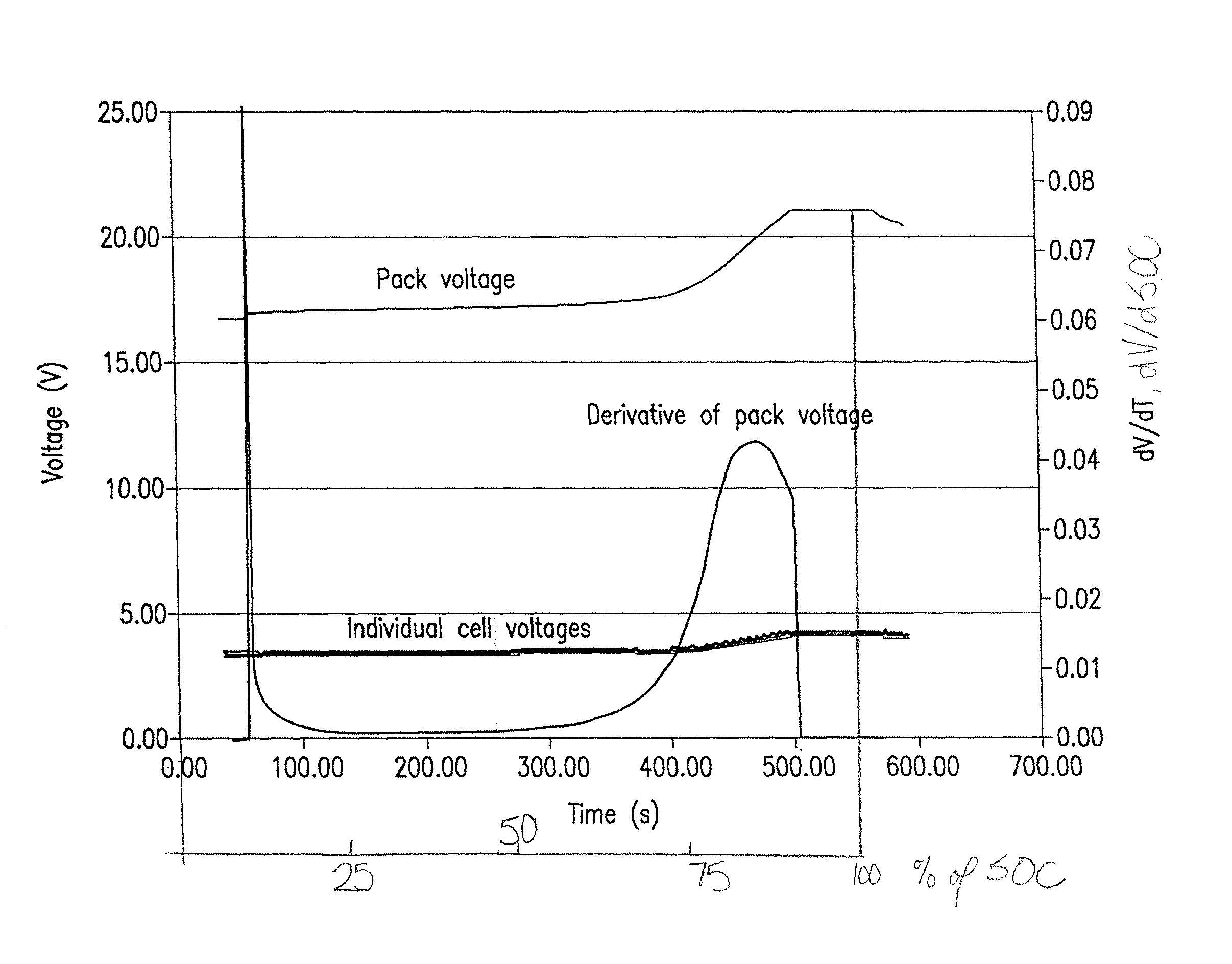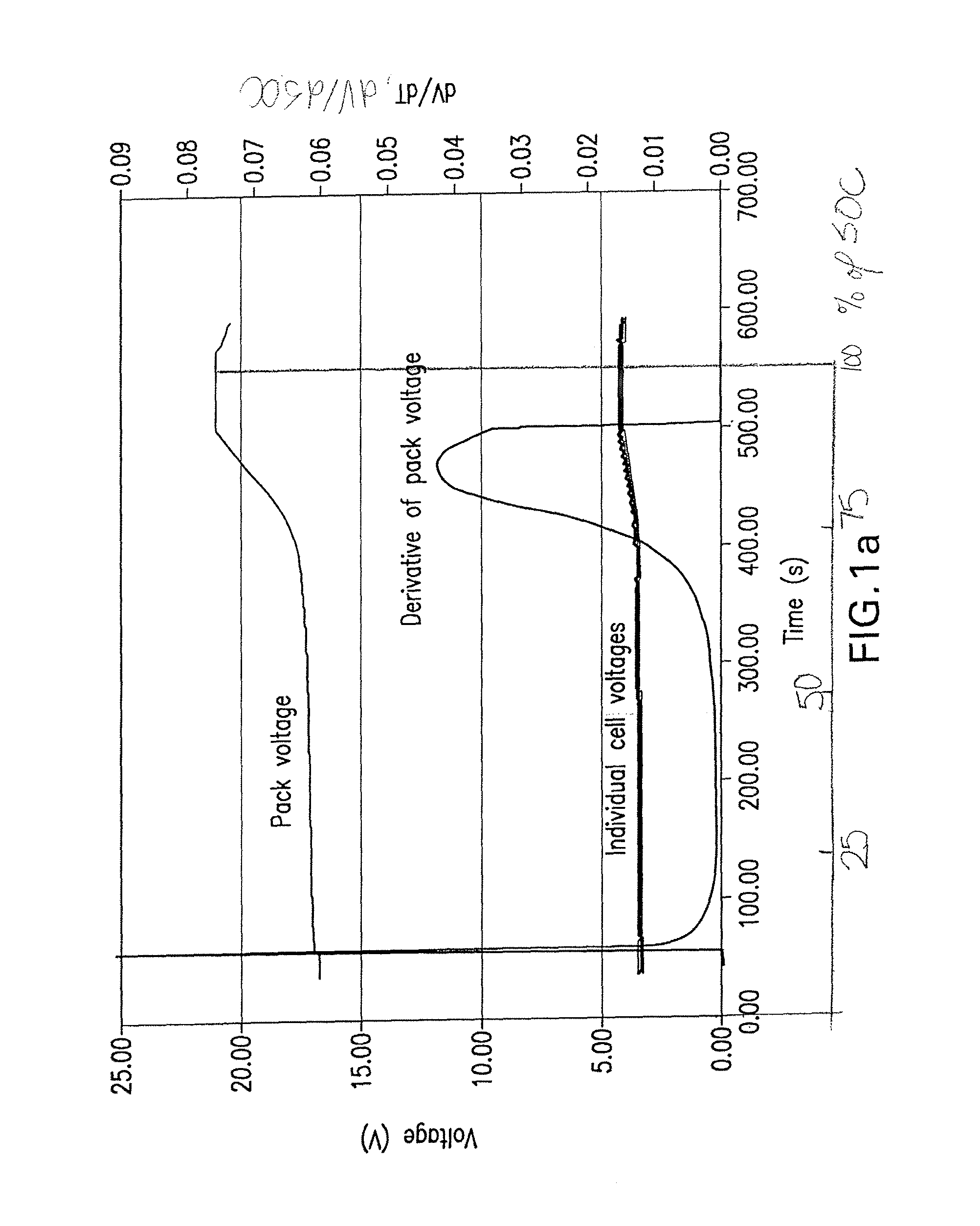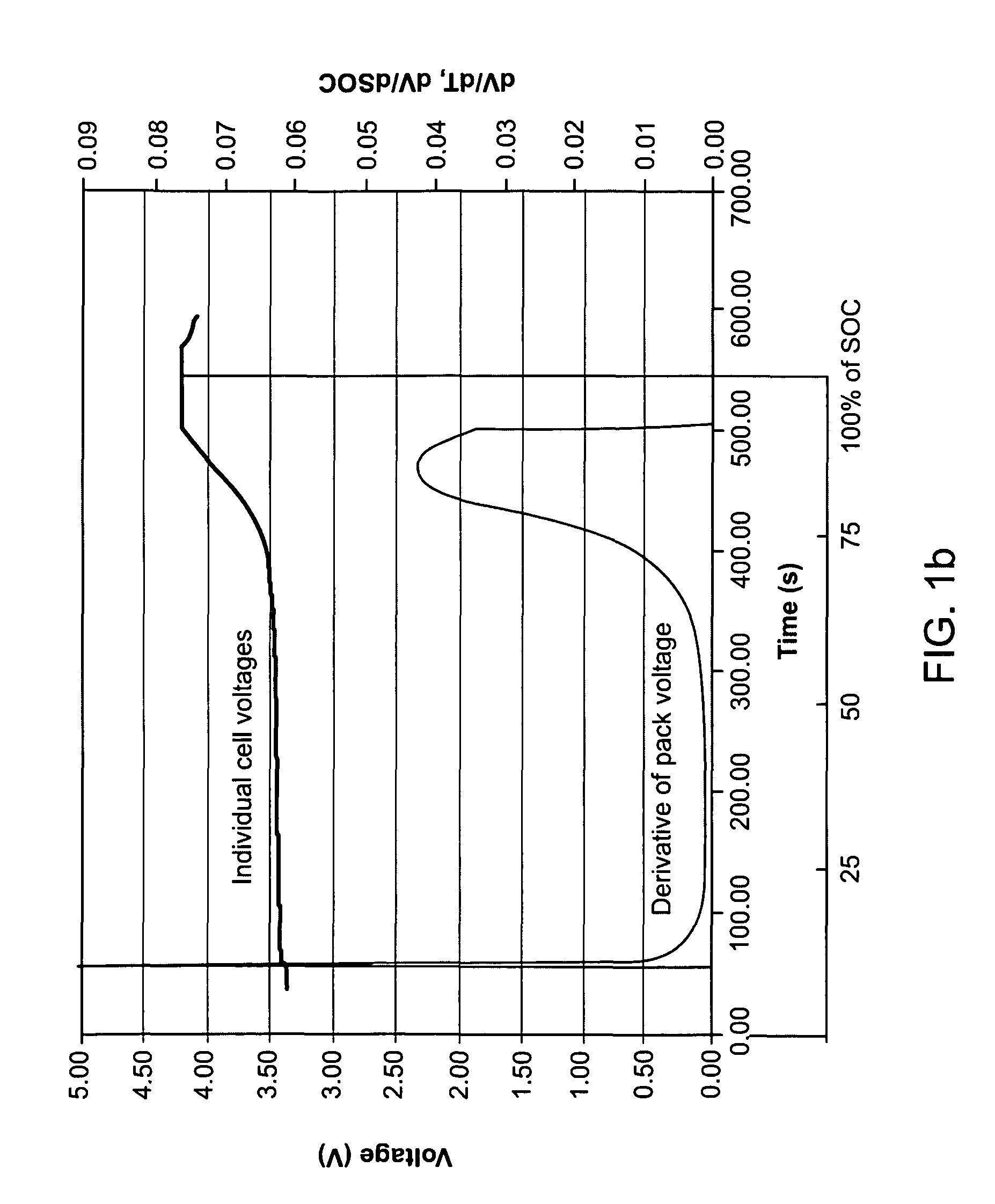Method for detecting cell state-of-charge and state-of-discharge divergence of a series string of batteries or capacitors
a technology of state-of-charge and state-of-discharge, which is applied in the direction of battery overcharge protection, safety/protection circuit, transportation and packaging, etc., can solve the problems of defective cells being the first to hit the upper threshold during charging, the cell state of charge is not as high, and the battery is not as high. to achieve the effect of avoiding overcharge or over discharge, prolonging the life of the pack, and avoiding unsafe conditions
- Summary
- Abstract
- Description
- Claims
- Application Information
AI Technical Summary
Benefits of technology
Problems solved by technology
Method used
Image
Examples
Embodiment Construction
[0010]Non-limiting examples of a pack of battery cells include lithium ion cells utilizing a LiMPO4 positive electrode where M comprises one or more of Fe, Mn, Ni or Co, or a LiMn2O4 spinel positive electrode, or a Li4Ti5O12 negative electrode, these types of compounds typifying lithium storage materials that exhibit a sharp rise in cell voltage as full SOC is reached or sharp drop in cell voltage as full SOD is reached. Often this is due to the existence of a constant voltage across a wide range of SOC resulting from a two-phase reaction as lithium is inserted or removed.
[0011]According to an aspect of the invention, use is made of the characteristic variation in voltage of particular cell chemistries as the limits of charge and discharge are reached in order to detect the existence of one or more out-of-balance cells, and to adjust the charging or discharging protocol on the basis of such input in order to avoid overcharge or over discharge, avoid unsafe conditions, or prolong the...
PUM
 Login to View More
Login to View More Abstract
Description
Claims
Application Information
 Login to View More
Login to View More - R&D
- Intellectual Property
- Life Sciences
- Materials
- Tech Scout
- Unparalleled Data Quality
- Higher Quality Content
- 60% Fewer Hallucinations
Browse by: Latest US Patents, China's latest patents, Technical Efficacy Thesaurus, Application Domain, Technology Topic, Popular Technical Reports.
© 2025 PatSnap. All rights reserved.Legal|Privacy policy|Modern Slavery Act Transparency Statement|Sitemap|About US| Contact US: help@patsnap.com



